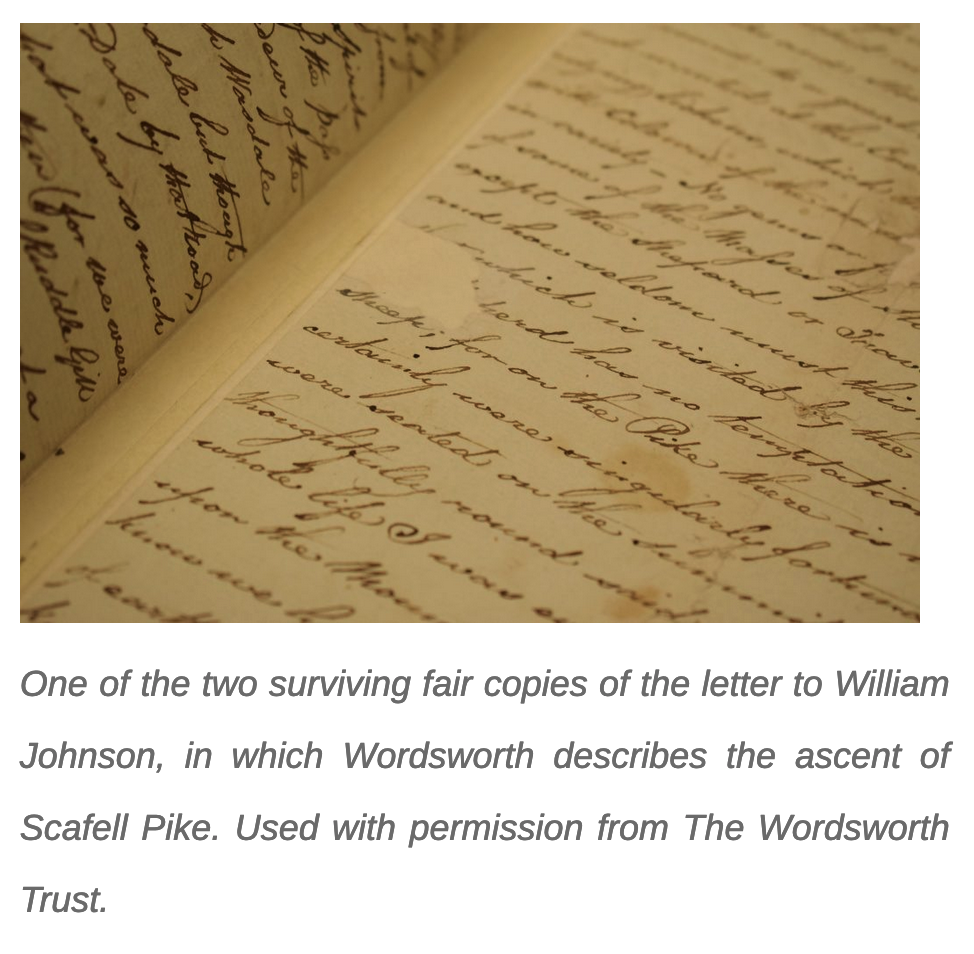
Dorothy Wordsworth’s “ambitious walking practices established women’s walking as an accepted practice in the Wordsworth, Coleridge and Southey families [and beyond]. Robert Southey, for instance, describes the delight which his daughter, Edith, and niece, Sara Coleridge, took from a young age in scrambling about on the fells around their home in Keswick, and Sara herself – not without some self-mockery – labelled them ‘expert mountaineers’.” …
“Wordsworth’s account of the ascent of Scafell Pike was later included – without attribution, possibly at her own request – in William Wordsworth’s Guide to the District of the Lakes. The implication was that it was William who had undertaken the ascent. As a result, Wordsworth’s legacy in climbing Scafell Pike [on October 7, 1818] is blurred into William’s, and many of the people who followed in her footsteps were unaware that it was her they were emulating.”
“The letter in which Wordsworth describes this feat draws attention to different ways of reading the mountain. In one moment she describes a landscape that stretches out for miles from the summit on which she stands. But at the next, when she looks down, Dorothy realises that though the summit seemed lifeless at first glance, in fact beauty could be found clinging to the rocks if one looked closely enough:
I ought to have described the last part of our ascent to Scaw Fell pike. There, not a blade of grass was to be seen – hardly a cushion of moss, & that was parched & brown; and only growing rarely between the huge blocks & stones which cover the summit & lie in heaps all round to a great distance, like Skeletons or bones of the earth not wanted at the creation, & here left to be covered with never-dying lichens, which the Clouds and dews nourish; and adorn with colours of the most vivid and exquisite beauty, and endless in variety (quoted with permission from The Wordsworth Trust).
In focusing on these details close to hand, rather than rhapsodising on the distant prospect, Dorothy anticipates writers like Nan Shepherd: these women propose an alternative to more familiar accounts of mountaineering exploits that emphasise a victory over a feminised Mother Nature when the climber conquers the summit. Instead, Dorothy recognises that paying close attention reveals unexpected features even on a barren mountaintop.”
(credit)